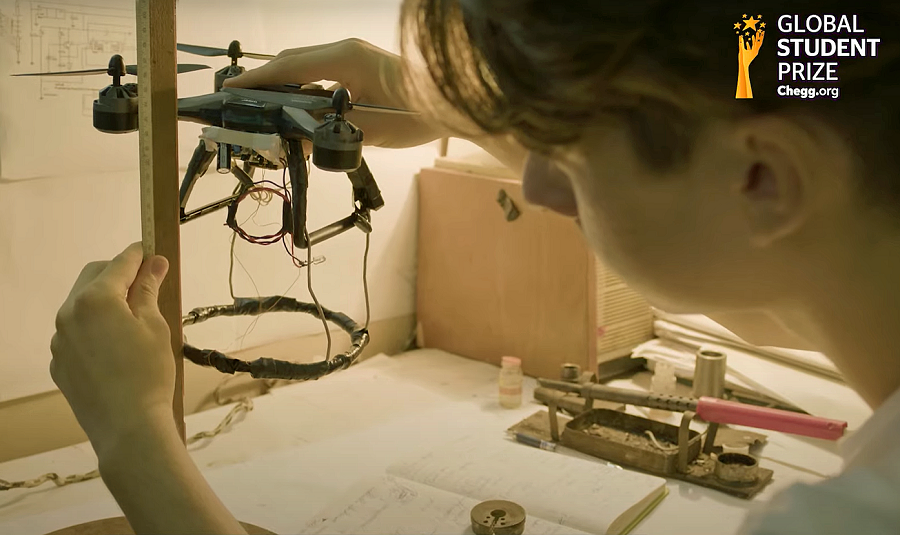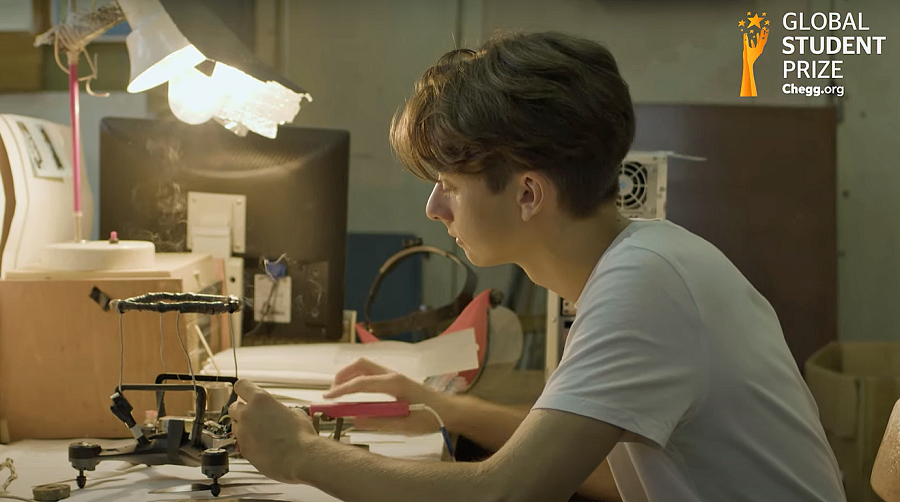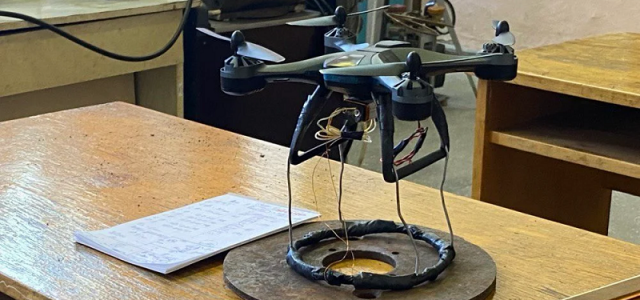In February 2022, when Russia invaded Ukraine, 17-year-old Igor Klymenko was forced to flee his home in Kyiv. He and his family moved to the countryside, sheltering in a basement. After three weeks, the young engineer decided to revisit a past passion project: a prototype of a drone that could detect unexploded land mines and send their exact coordinates remotely to a user. The problem is global: as many as 110 million land mines may be buried in about 60 countries. In this project, Klymenko joins several organizations, worldwide, working on various technologies to solve the landmine problem.
While finishing his senior year, Klymenko worked with scientists and programmers to hone his Quadcopter Mines Detector. He now has two working prototypes of the device and two Ukrainian patents. At the recent Clinton Global Initiative in New York City, Klymenko was awarded the Chegg.org Global Student Prize, a $100,000 award for students making an impact on society, learning and the lives of their peers.
The device uses an F5 PRO quadcopter with a metal detector Klymenko designed suspended underneath it as it flies. A built-in gyroscope detects the effect of wind on the drone. The mine detector in its current form can fly for a duration of 20 to 30 minutes and a distance of up to five miles. It takes the drone about two to three weeks to scan a square kilometer of land and calculate land mine coordinates.
Before the drone begins its flight path, it records GPS coordinates in a static location. The user then sets the length and width of the area the drone will scan. After takeoff, as soon as the metal detector encounters a mine, it sends an infrared signal to a phototransistor on an Arduino board. The board executes a code that Klymenko wrote in the programming language C++, which records how much time had passed since the beginning of the scan to when the signal was received. Using the speed of the drone, the time it launched and the time the metal detector located a mine, the code calculates the coordinates of the mine relative to the start of the run; this calculation is then translated into GPS coordinates within two centimeters of accuracy.
In the future, Klymenko hopes to add a ground-penetrating radar to improve the Quadcopter Mines Detector’s accuracy, a spray paint system to allow it to physically mark a land mine’s location and artificial intelligence to provide exact coordinates and the type of land mine. Eventually, he also wants to incorporate a detonation function. He’s continuing to refine his device with the goal of creating a minimum viable product by the end of this year. Watch an overview video here. Photos courtesy of Klymenko Igor Klymenko via Smithsonianmag.com.























God speed Igor. May the force be with you!